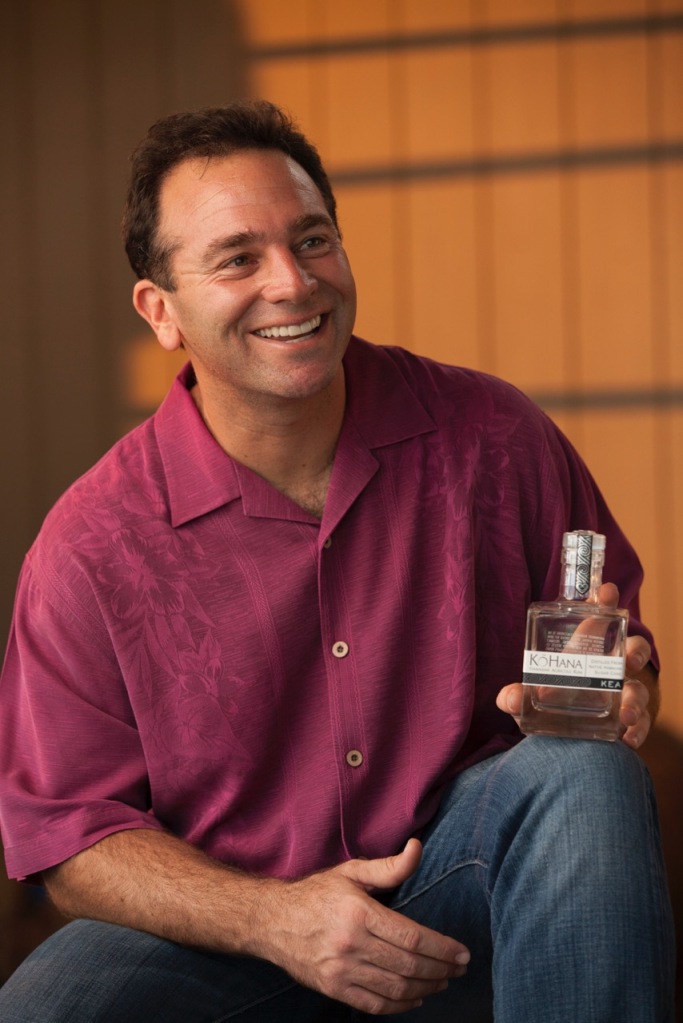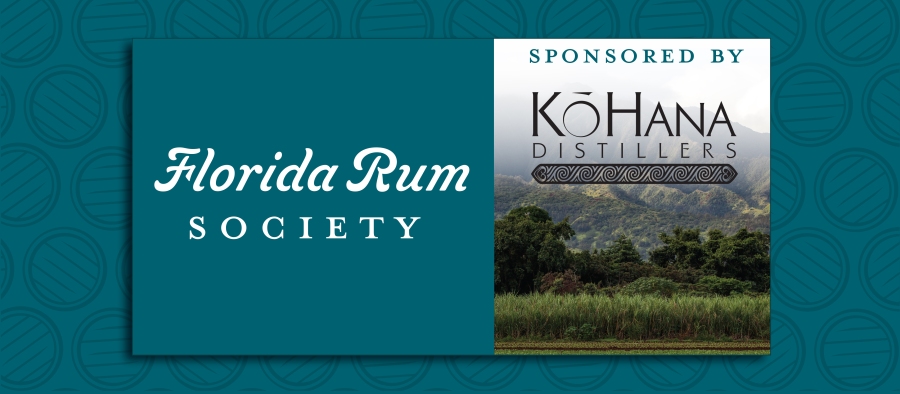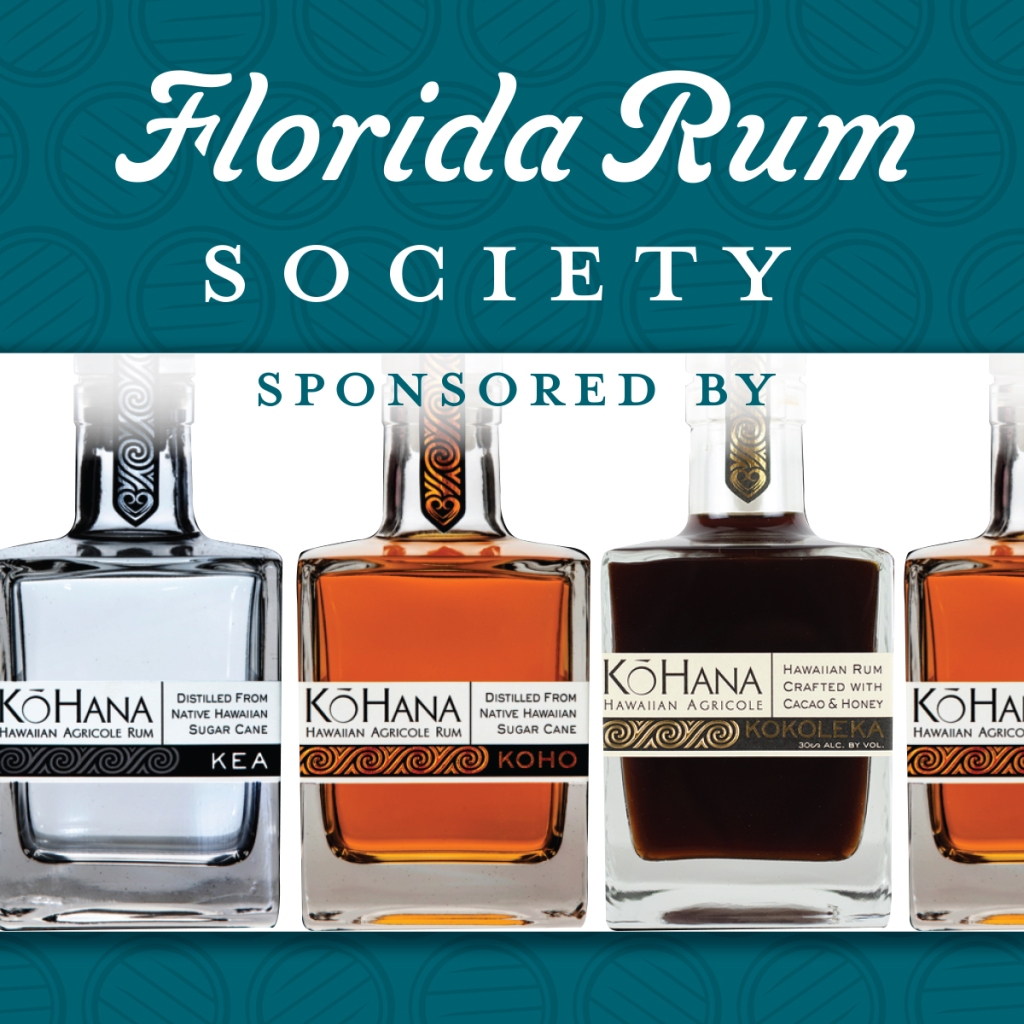
FRS: Jason, would you mind providing a quick, 3 sentence introduction of yourself?
JB: I’ve been blessed in life with a wonderful career, great friends, and an incredible family. In my fifty years, I’ve learned to appreciate the details in life that are underneath the experiences we share – the actual building blocks of things. For the last decade, I’ve lived in Hawaii, growing 1,000 year old heirloom Hawaiian sugarcane varietals and distilling the pure cane juice into one of the finest rums in the world.
FRS: Would you mind telling us about your personal rum journey and background? What brought you from Florida to Hawaii?
JB: I grew up in Miami, spending most of my days on or in the water. The image of a watching a bright orange sun setting over the ocean with a good Agricole and a twist of lime in my hand is etched in my mind forever.
My career moved me north to New York City, where flip flops were traded in for dress shoes and bathing suits became business suits. My drink of choice changed too, reflecting the faster pace of the city and the colder weather. Fine rums turned into whiskeys and the nuances of drinks became about blending and barrel choice instead of the starting ingredients. With longer work hours, social drinking was about release and less about building the fond memories that rum drinks elicit.
Tokyo was up next for my family. In finance, Asia was booming and my company sent me there to help build our capabilities. In liquor terms, Asia introduced me to a host of new alcohols: sochu, baiju, lambanog, soju, and ruou to name a few. Each spirit had a different base ingredient, new ways of fermentation and distillation, sometimes bizarre ingredients (like venomous snakes) included, and offered something new. The experience reopened my eyes to how great ingredients create great end products.
Hawaii, with its warmth, beauty, and kind people, was an easy next step as we made our way back to the US and closer to family. Not having any roots in the islands, we built our community through the land. Our first farm is now one of the largest providers of leafy greens in Hawaii. Kō Hana is farm number two – and began years before the first bottle of rum was ever made. My business partners and I realized that we had to perfect the ingredient side – the farming side – first in order to produce an incredible product. The decision to showcase our farming as an Agricole style rum was easy and success soon followed.
FRS: Kō Hana has a very unique approach to Agricole style rum… what inspired you and your team to do all single cane varietals?
JB: 1,000 years ago, early Polynesian voyageurs traveled across the wide ocean and settled in Hawaii. They brought sugarcane with them in their canoes. These canes thrived in the island’s climate and became part of traditional Hawaiian daily life and legends. In the 1800s, the table sugar industry moved to Hawaii and slowly replaced all the heirloom canes with the types used to make the sugar cubes modern society enjoys.
Kō Hana, working together with scientists, professors, and botanical gardens, reestablished the original strains of ko – the Hawaiian word for sugarcane. In fact, we have over 30 heirloom varieties, each genetically unique and each one with its own story in history. The cane ranges in color from red to green to pink to orange to purple, with and without striped patterns. Notably, each variety has its own distinct flavor.
To tell the story of the ko, we only use the fresh pressed juice of a single varietal as the base in each of our Hawaiian Agricole rums. That means we have over 30 different varieties of white rum and they all taste different, each one reflecting the spirit of the sugarcane that made it. We follow specific process for how we ferment, how we distill, and how we age – each adding to the complex flavors that make up Kō Hana.
In our tasting room, visitors sip rum in side by side comparisons, noticing how the starting plants – the different cane varieties – affect the characteristics of the rum. Then, they move to our barrel aged selections and observe how the interaction with different woods further transforms the rum.
Kō Hana never sacrifices quality in our process. It’s what makes us one of the best cane rums in the world. Most important, Kō Hana lets people connect to what they are drinking. There is a sense of place, of history and the land, with every drink.
FRS: Are you able to pick a favorite cane varietal or is that like trying to choose a favorite child?
JB: Long ago, there was a ceremony called the Hana Aloha. Hana means “work” and Aloha means “love.” Together, the phrase translates as “the work of love” or “love magic.” A priest would enchant the spirit of a cane called Manulele (means “flying bird”) to fly away and bring back the love of another. I love that story. In many ways, it’s the story that launched Kō Hana Hawaiian Agricole Rum.
Each of our rums have a story like that. Flavor wise, I personally enjoy a cane variety called Kea (means “white”). The cane is white in appearance and was planted by most Hawaiian houses when the Hawaiian islands were being unified. It’s sweet juice ferments and distills into a very grassy bouquet when making an Agricole style rum.
FRS: Do you have a favorite Kō Hana cocktail recipe that you’d be willing to share with the FRS?
JB: Easy one for me. The Ko Fashioned. It’s our play on a Rum Old Fashioned.
- 2oz Kō Hana Koho Aged Hawaiian Agricole
- Barspoon of simple syrup (or use Kō Hana Kokoleka to step it up a notch)
- Dash Angostura Bitters
- Dash Orange Bitters
Stir ingredients with ice
Strain over new ice cubes
Garnish with an orange peel
FRS: Those members that pay close attention to Kō Hana probably know about the Koa barrel finished rum. (I’m, personally, a HUGE fan!) Can you talk about how that idea came about and if there are any other unique expressions like this on the horizon?
JB: Koa is delicious. My business partner, Robert, was working to find Hawaiian plants that would pair well with our distillery’s philosophies. Koa is the endemic Hawaiian tree, with beautiful grains and rich in color. A local business helped us cooper the first Koa wood barrels and the product was born – well, it was born after the first few samples were pulled from the barrel and all of us stood there with our mouths agape at how amazing the koa aged rum tasted. Our Koa rum is truly an original spirit, likely the first of its kind. For reference, a Koa wood barrel costs roughly $8,000 compared to $150 for American oak – and it’s worth it.
In terms of unique expressions, for those who haven’t tried our Kokoleka rum, it’s three Hawaiian farms together in one bottle: our Hawaiian sugarcane, local Hawaii honey, and local Hawaiian cacao to create a chocolate, honey rum. It’s the bomb for dessert lovers. Our Kila rum is where the distillery truly gets to showcase its craft at barrel strength. We release about six Kila’s a year, each one trying to tell the story of a cane variety through the use of different woods. My favorite was a three year old rum that we finished in a Laphroaig barrel. The grass of the cane met the smokey peat from the scotch still soaked in the oak – so bold, so amazing. Our newest Kila should be coming out very soon.
FRS: Besides, obviously, a tour of Kō Hana Distillery, what are your “can’t miss” things that members should make sure they check out when visiting Hawaii?
JB: If you are coming from Florida, then Hawaii will be less about our beaches and more about our mountains, rainbows, and waterfalls. Great hiking is everywhere and the payoff (like a gorgeous view or the base of a massive waterfall) is worth it. Most hikes will take you up the mountains through four or five different ecosystems. Right now, the Kilauea volcano is erupting and the lava is forming a molten lake that you can visit. For the foodies in the group, Hawaiian chefs do not disappoint. The farm to table scene in Hawaii is growing quickly, each restaurant showcasing different flavors from the across the islands. Mixologist pair cocktails with their menus, taking advantage of the fresh tropical ingredients available to them.
FRS: Do you have any hobbies or passions outside of rum?
JB: My family are avid scuba divers. We’ve been all over the world observing the remarkable creatures of the sea and the beauty of the ocean. Fortunately, dive trips to foreign lands also make the perfect excuse to try new rums and what the local terroir offers (after diving is finished for the day).
FRS: What are you most looking forward to over the next year or two?
JB: For all of us, life has been a strange whirl wind for most of 2020 and 2021. Kō Hana spent 2020 as the largest hand sanitizer manufacturer in Hawaii since the supply chain for ethanol based sanitizers to the community had totally shut down. Simultaneously, we increased our field production (we grow all the cane that we ferment and distill – we are an estate rum) by seven fold, becoming the largest grower of sugarcane in the islands. We also completed a brand new barrel house. In the next year or two, we will begin to reap the benefits of these investments. Kō Hana had already established itself as Hawaii’s premium rum based on our quality. We put our money where our mouth is with regard to our role in the community as well. We rose as a leader in the pandemic and now we are rising as a job creator and caretaker of the land as our new production fields will let us share more of Kō Hana’s aloha with the world. Thank you to all of you for being so supportive of our company.

